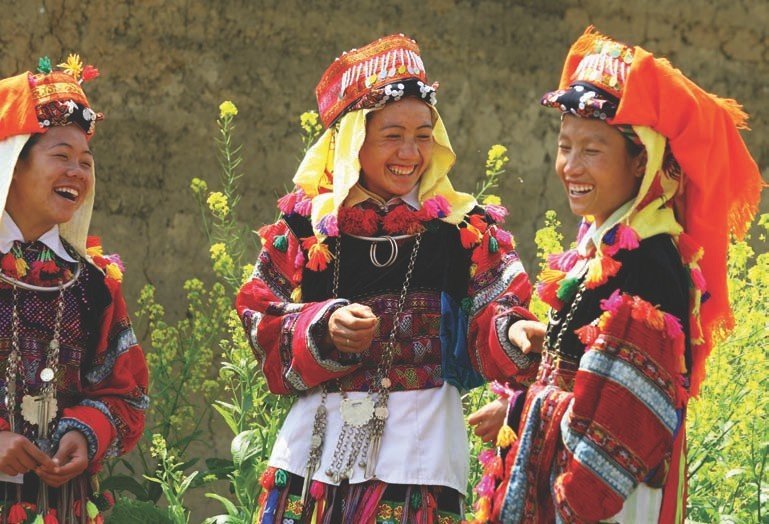
After selecting an auspicious day, the four matchmakers will take two bottles of wine and other offerings to the bride’s house for the proposal of marriage. If the bride’s family agrees to the match, they will hold a feast at which the wine is drunk and the date of the wedding is set.
Wedding gifts must include both sticky rice and ordinary rice, pork and wine for consumption at the wedding party. Other gifts can include a skirt, blouse, bracelet and necklace for the bride and even a quantity of white silver.
The groom’s family normally brings their offerings to the bride’s house on the eve of the wedding day, making sure that the wedding day itself is an even-numbered day to symbolise the union of two people, in the hope that neither of them will ever be alone again.
The offerings are handed over to the bride’s uncle, who presents them to the head of the bride’s family.
The wedding offering ceremony begins with the bride’s family worshipping their ancestors and reporting to them on the union.
After this they invite their relatives and friends to eat, drink and share their happiness.
The bride is usually given gifts of scarves, shirts, money and other items by the guests.
The ceremony involves much singing and takes place in a very intimate atmosphere.
That night, members of the bride’s family will sing all night long to wish the bride and groom well.
The wedding takes place on the following day. After breakfast, the groom and his groomsman worship their ancestors and then kowtow to the bride’s parents, uncle and guests.
The uncle then leads his niece from her bridal chamber and presents her to the groom’s family.
At this juncture all of the bride’s family cries to show their their attachment to her.
The bride her- self is expected to cry the most, to show that she doesn’t want to leave her natural parents.
Bridesmaids from both families accompany the bride out of her house.
Then the “bringing the bride home” party – comprising the four matchmakers, followed by the bride, the bridesmaids and the groom’s relatives – processes to the groom’s house.
The bride is welcomed at the groom’s house in much the same way that the groom was greeted at the bride’s house on the previous day, with drinking and singing by the four matchmakers.
According to Lo Lo custom, when the bride steps into the groom’s house, the groom’s parents must temporarily hide themselves, because it is feared that their presence might overwhelm the bride’s soul, endangering her future health.
Soon after the bride’s party has arrived at the groom’s house, the bride’s uncle turns up with his niece’s dowry, which typically includes a pig, a chicken, a hoe, a pan, a knife, clothing for the bride, wine, meat and sticky rice.
If the bride’s family is rich, he may even bring a cow. The groom’s family then hosts the wedding party, at which they too must sing together all night long to wish the young couple happiness.
When seeing the bride’s uncle back to his home, the groom’s family will reimburse some money to him as travel expenses and gifts, based on the amount of the bride’s dowry.
Three days after the wedding day, the couple returns to the bride’s house to visit and greet the whole family. They stay there for a few days but then they go back to live at the groom’s house.
VCW